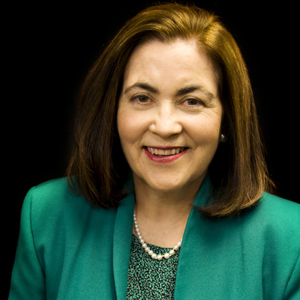Pacific Gas and Electric Company (PG&E) provides natural gas and electric service to approximately 16 million people throughout a 70,000-square-mile service area in northern and central California. Overseen by the California Public Utilities Commission (CPUC), PG&E sits as one of the largest combined natural gas and electric energy companies in the United States.
PG&E maintains a strict focus on its core values to continue its growth and become the nation’s leading utility operation. A fundamental part of these core values includes its emphasis on environmental sustainability, which acts as the guiding principle for evaluating and managing the company’s supply chain priorities and processes.
Within this process, PG&E has developed a supplier diversity program that is critical to its business value chain and future growth. This importance is evident as the initiative has grown into one of the premier programs in the nation. In only ten years, PG&E has tripled its purchases with small and diverse suppliers, spending over $3.4 billion with woman-owned, minority-owned, serviced disabled-owned, and LGBTBE-owned businesses in 2019. This accounts for over 40% of its total procurement and far exceeds the CPUC’s General Order 156 goal of 21.5% diverse spend. It is the eighth consecutive year that PG&E has spent more than $2 billion with diverse businesses and the 14th year to exceed the General Order 156 goal.
Joan Kerr, Director of Supplier Chain Responsibility, PG&E
Creating a billion-dollar program
For PG&E, the success of its billion-dollar supplier diversity program starts at the top. From day one when Joan Kerr, took over her position as PG&E’s Director of Supplier Chain Responsibility (Supplier Diversity, Sustainability and Ethics), her executive team was in full support of the operation. “Our Chief Procurement Officer was fully committed to having a strong supplier diversity program, [as was the CEO]. Having that support from the C-Suite enabled us to really grow the program significantly over the last 10 years”
Kerr and her team approached its objective of strengthening its supplier diversity program by implementing a four-part strategy:
1. Implement a Supplier Diversity “system” of policy, procedures, and processes
Kerr wanted to establish a program that would function and be effective for a long time. Having secured leadership support, PG&E needed a system and success metrics to manage the program. This system had to account for the differing departments and personalities that are critical to the success of the program. As Kerr explains, “There has been a change in leadership and different people have different levels of passion around this topic, but once you’re able to establish policy, procedures, processes, and you have the staff to execute”, these systems can continue great work “regardless of changing leadership.”
2. Communicate Business Value
In formulating these processes, it was essential to communicate the business value of the program to the organization. “I didn’t want a meet-and-greet…or a cheer-leading program but rather a program of folks who really are deeply involved in the value chain process.” Kerr stated. To do this, it became crucial to build a relationship with sourcing and the lines of business to integrate diverse suppliers into the value chain. Instead of linking supplier diversity to compliance or community outreach, Kerr positioned the initiative as a way to help “improve PG&E business operations” wherever they could.
3. Develop Suppliers
Once sourcing and suppliers started communicating about business needs, Kerr needed to make sure diverse suppliers understood the requirements it took to become a qualified PG&E supplier. To do this, the organization introduced several supplier development programs designed to educate and prepare suppliers for potential opportunities.
An example of this includes PG&E’s Diverse Suppliers Go Green initiative. “To win RFPs and be at the top, suppliers needed to have an environmental sustainability policy, plan, and metrics to share at the RFP process” said Kerr. For the Go Green program, PG&E educates diverse businesses on environmental sustainability and helps companies establish their own initiatives.
Additional programs help diverse suppliers in similar ways, some of which include improving safety and cybersecurity. PG&E has a 4-part Technical Assistance Program so prospective suppliers understand how corporate sourcing processes work and where they need to show up well. These types of training initiatives are open to any diverse supplier regardless of qualification to improve businesses education throughout the community
4. Growing from Tier 1 to Tier 2
PG&E does its best to search for and connect with small and diverse suppliers but also ensures that its impact doesn’t end with PG&E’s direct purchasing. “[The] biggest impact [is] when we can all share the wonderful news about supplier diversity and the value it can bring to every corporation.” Kerr says. This philosophy has led to its current Tier 2 initiative and the goal of driving increased diversity inclusion through prime supplier subcontracting or business solution partnerships. PG&E also tracks Tier 3 spend.
PG&E needs the partnership of Tier 1 prime suppliers in working on supplier diversity inclusion because, as key core suppliers, they have huge opportunities to bring diverse suppliers into the value chain.” According to Kerr, the cascading impact of an end-to-end supply chain that supports supplier diversity is much greater than an initiative focused only on Tier 1. Sourcing plays a key role in encouraging first-tier suppliers to look at the value chain involved in their provision of goods and services to PG&E. If there are opportunities to improve performance, a diverse supplier may be able to help them. Integrating a diverse business can improve operations, quality, cycle time and reliability.
PG&E also encourages prime suppliers to start their own supplier diversity programs and even offers training to do so. Prime Supplier Academy is where PG&E trains prime suppliers on everything the company does in supplier diversity so that they can develop their own world class program. To encourage connections between its prime suppliers and diverse suppliers, PG&E invites primes to join them at outreach events and to join key diversity advocate councils.
Next steps
Moving forward, PG&E will continue to grow its supplier diversity program with the goal of creating a positive impact across the economy.
Kerr believes that supplier diversity is one of the solutions that can accelerate and strengthen communities. As Kerr puts it, “I feel like supplier diversity has a huge role to play…and that all of us that have been working in supplier diversity can feel re-inforced in our work.”
Kerr is hopeful that more support will be given throughout the business and corporate supply chains, and that everyone will understand its contribution to “the health of our country and our communities, as well as, the health of our businesses.”




